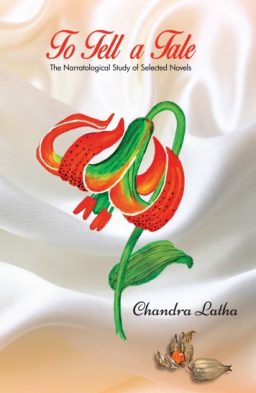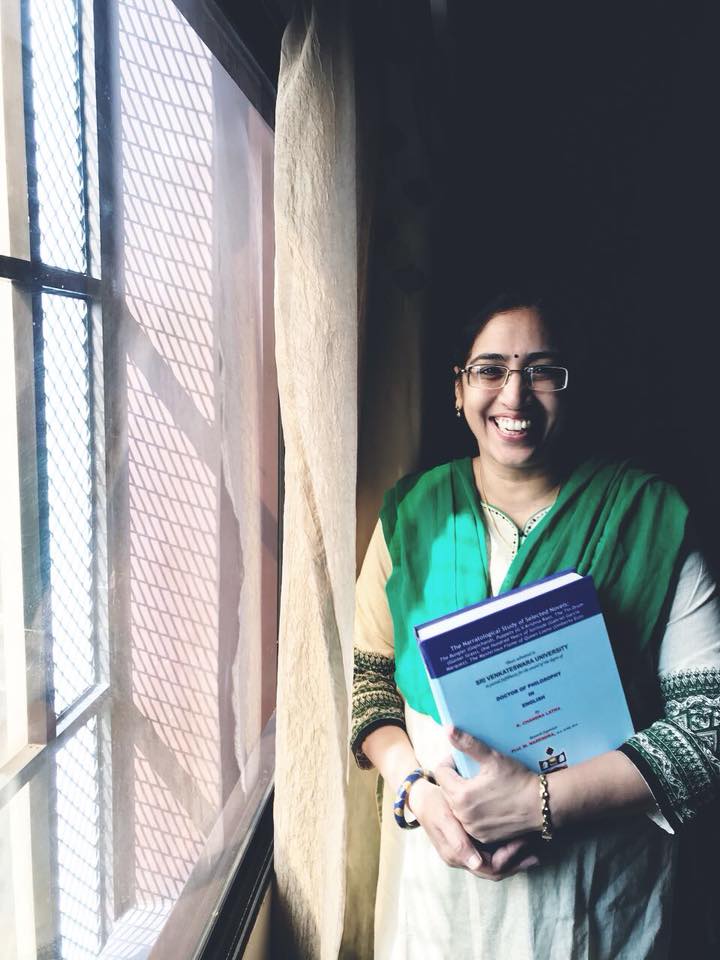
To tell a tale-28
(Chapter-7 Part-5)
-Chandra Latha
Gopichand’s seventy year old novel may appear relevant for latest times appealing to the present reader, and the decade old novel, The Mysterious Flame of Queen Loana could successfully, take the reader to seventy years past. Understanding and execution of the organic nature of the time with the balance of temporal and the spatial equilibrium along with the gap, the pause, the hiatus that provided certain openness, is one of the important narrative secrets along with their context and concept, for the survival, existence and prevalence of these novels beyond times.
“The greatest discrepancy between idea and reality is time: the process of time as duration.” (George Lukas. Grand Theory I Theory of the novel. Edited by Miachael Mckeon. John Hopkins University Press, 2000, Pg.216)
The novelists understudy, phenomenally understood the nuances of space-time relationship. Each novelist related to the contemporary reader of his own present. The contemporaneity of the textual narrative is relative to the socio-historical time of the novelist and the narrative readership or audience.
Lukas further explains that “the novel’s aim is to represent a particular social reality at a particular time, with all the colour and specific atmosphere of that time.” (George Lukas, Pg. 216) Five selected novelists have brilliantly captured the interrelation between the theme, social reality and time. This understanding is reflected in their narratives and these novels evolve as the historic representations of the respective social moments. The irresistible course of social development, that can move either progressively or retrogressively, is effectively captured in the narrative capsule. Within the given time and space, a social reality is translated into a novelistic narrative. These narratives successfully represent the history and they made history with their popular success stories.
The Bungler records both the change in personalities and the social changes immediately after the political independence of India. The novel Puppets brings out the otherwise lost in the history incident of Katuru and Ellamarru, The Tin Drum’s focus is on Krystallnatch. One Hundred Years of Solitude is the story spun around the Banana Massacre whereas, The Mysterious flame of Queen Loana, records the depth of the partisan resistance.
The super simple narrative style of Gopichand is possible because of the contemporaneity of the theme and the form evolved naturally to meet the narrative demand. The addressed reader of The Bungler needs hints of words that can relate to the reader and move to the depths of the narration. The irony presented in Puppets, the surrealism of The Tin Drum, could have been possible because of that contemporaneity. One Hundred Years of Solitude demands the reader to travel into the infinity of the time that Marquez created. And, hence the magic realism is the apt narrative frame that organically executes the narrative, the history wrapped in the foils of fact and fiction. Umberto Eco employs lot of intertextuality and the hybrid narrative that he constructed, demands multiple interpretations by the readers to understand the narrative which is a “lazy machine.”
The form thus, influenced by the need and demand of the contemporary readership, in fact, organically evolved a kind of double coded uniqueness and universality, which exist simultaneously in the narration. According to M. M. Bhakthin “Contemporaneity for its own sake (i.e., a contemporaneity that makes no claim on future memory) is molded in clay; contemporaneity for the future (for descendents) is molded in marble and bronze. The interrelationship of times is important here.” (M.M.Bhakthin, Pg.17). The selected novels prevailing for more than half a century, establish themselves as carefully crafted marble and bronze artifacts.
The contemporaneity identified by the reader with the narrative is quite relative as some ideas, images, references, satires and other narrative stylistic nuances may lose in the effort of understanding. Some new dimensions will be added by the reader from time to time in their attempt and effort to understand the narrative. For instance, “the pillbox and the asparagus of The Tin Drum, wouldn’t have needed any explanation for a reader who survived during the period of the world wars, or the contemporary reader of the text. For the same reason, when Umberto Eco was narrating his story after half century later, he choose to include enormous audio-visual and print memorabilia of half century old to enforce the narrative that is distanced between the contemporaneity of the text and the reader. Eco himself is distanced by the time of his experience and narration and that gap enabled him to narrate the experience both subjectively and objectively.
The looseness of the text and the loopholes in the narrative of The Bungler can be explained as the novelist’s focus was on his contemporary readers rather than the future readers. The narrative in The Bungler, is like a montage with series of incidents presented in different frames and the focus quickly moving from one frame to the other. That looseness, the loopholes, the moving frames helped the text to be porous and enabled the reader to participate in the interpretation of the narrative. In the complex texts of the One Hundred years of Solitude, The Tin Drum and The Mysterious Flame of Queen Loana, the novelists deliberately leave loose ends, and hints to lead and puzzles to solve, suspense created, adventure invited, such that the narrative gets gaps in between, like the unreliability of the narrator in The Tin Drum and the unknown narrator of the One Hundred years of Solitude. Such open space that Eco describes as narrative machines that enable the readers to participate in the narration.
The Tin Drum’s narrative style of surrealism itself is like assembling of unevenly broken pieces together, which would eventually provide ample space for reader’s participation. In Puppets, the thematic treatment of irony itself provides space for the readers participation. This inclusiveness of contemporaneity is explained as spontaneous reaction to the yet to complete present of the novelist or the narrative opens space for the reader and enables the fluidity of the narrative explained by M.M.Bhakthin. The novelist comes into contact with the spontaneity of the inconclusive present. This keeps the genre from congealing. The novelist is drawn toward everything that is not yet completed. (M.M.Bhakthin, Pg.27)
The inconclusive present and the demand of contemporaneity of the future enabled the novelists understudy to invent and execute new narrative techniques .This effort helped the five novels to evolve as naturally as they can, the narratives achieved the contemporaneity of the future of the narrated text within the time frames of the narratives. The reader from every generation could able to relate with something or the other in the narrative. These novelistic narratives could survive the challenges of time and could eventually prevail beyond times.
The hypertext of the multiple narratives that exist within the matrix narrative is observed in all the selected novels. Each novel has unique chronotope and speaks its own narrative language providing the possibility of several voices simultaneously. These voices complement each other and at times contradict each other. The narrative thus attains polyglossia as described by M.M.Bhaktin. Polyglossia creates a kind of lyrical rhythm in the textual notation in the narrative.
Music is not just theoretical but, two novelists choose to write in the form of musical notations. One hundred Years of Solitude is orchestrated in the fashion of Bolero, a dance musical notation typical to the Columbian culture and The Mysterious Flame of Queen Loana is constructed in the form of a Sonata, an established classical music form. The Tin Drum is thematically a declaration of debate on art versus war. Polyphonic rhythm in the narrative is not just the multiple voices creating a symphony but, the aesthetic essence of these narratives. They remind the reader of the ‘poeticization’ and ‘musicalization’ of Virginia Woolf’s novels.
Both the Telugu novels have significant space for music, songs and classical norms. Even though, the novel Puppets derived it’s inspiration from a Norwagean novel, The Power of a Lie by Johan Bojer, for both theme and form, it quickly evolves into independent narrative as the author embraces Indian aesthetics and consciously works on dhwani or tone of the novel. This naturally enables polyglossia which is highlighted by the Indian Aesthetics, with an emphasis on perfect balance of percept and concept. Polyglossia is an inherent narrative device present in the not so carefully constructed novel, The Bungler.
*****
(Contd..)

Chandra Latha, writer from Nellore won Telugu Association of North America award in 1997 for the novel “Regadi vittulu”. Her other novels are Vardhani(1995) and Vallu veellu paarijaataalu (2011). Her short fiction includes nearly 80 stories compiled in nenu nanna navutha (1996),Idam shareeram (2003) and vivarnam(2007). Her non-fiction are (Fish can fly!) ”vacche daretu(2010), itanala kadaku eeboothi boTlu(2010). And also published her blogposts in a book madata pejee(2010).
